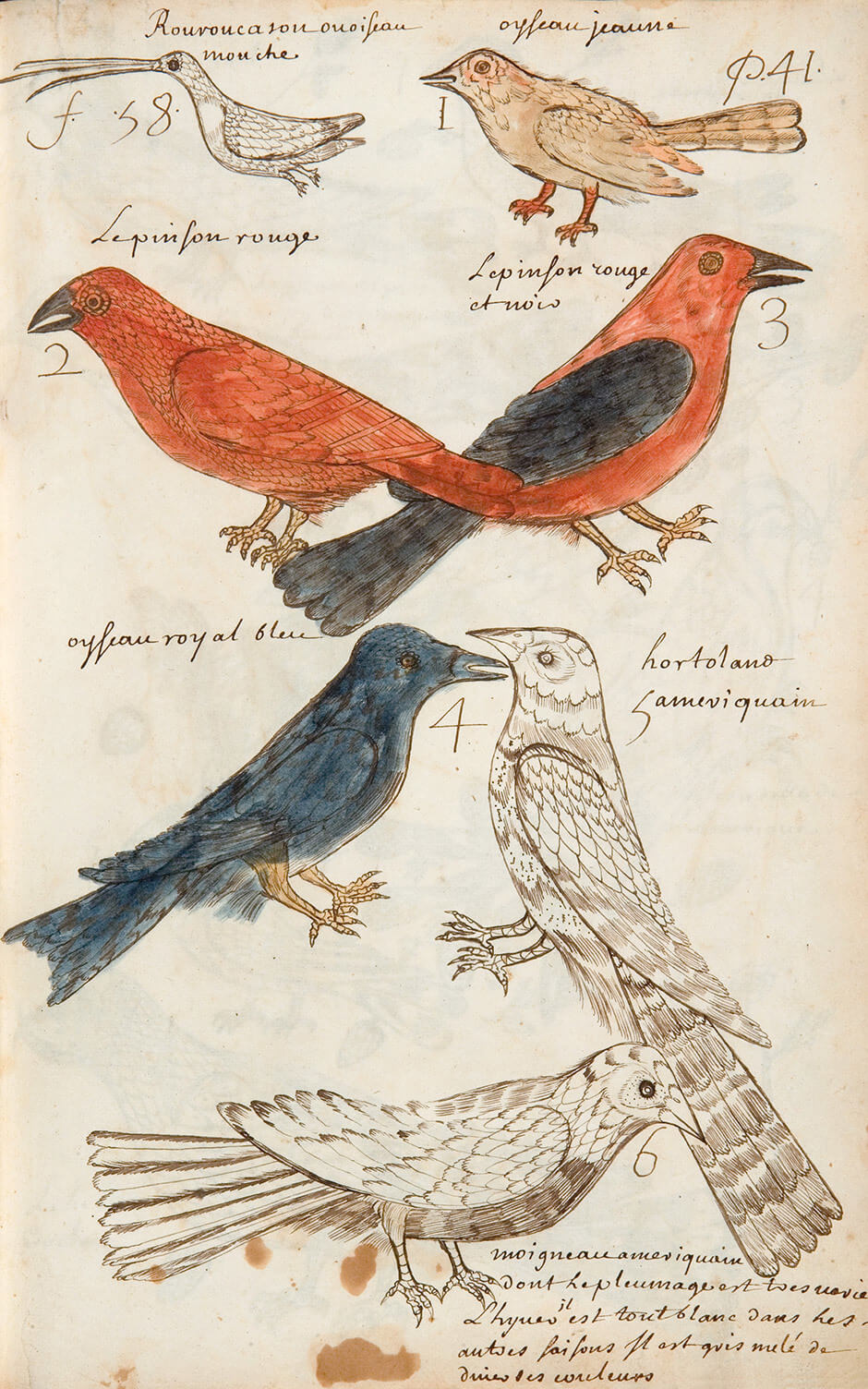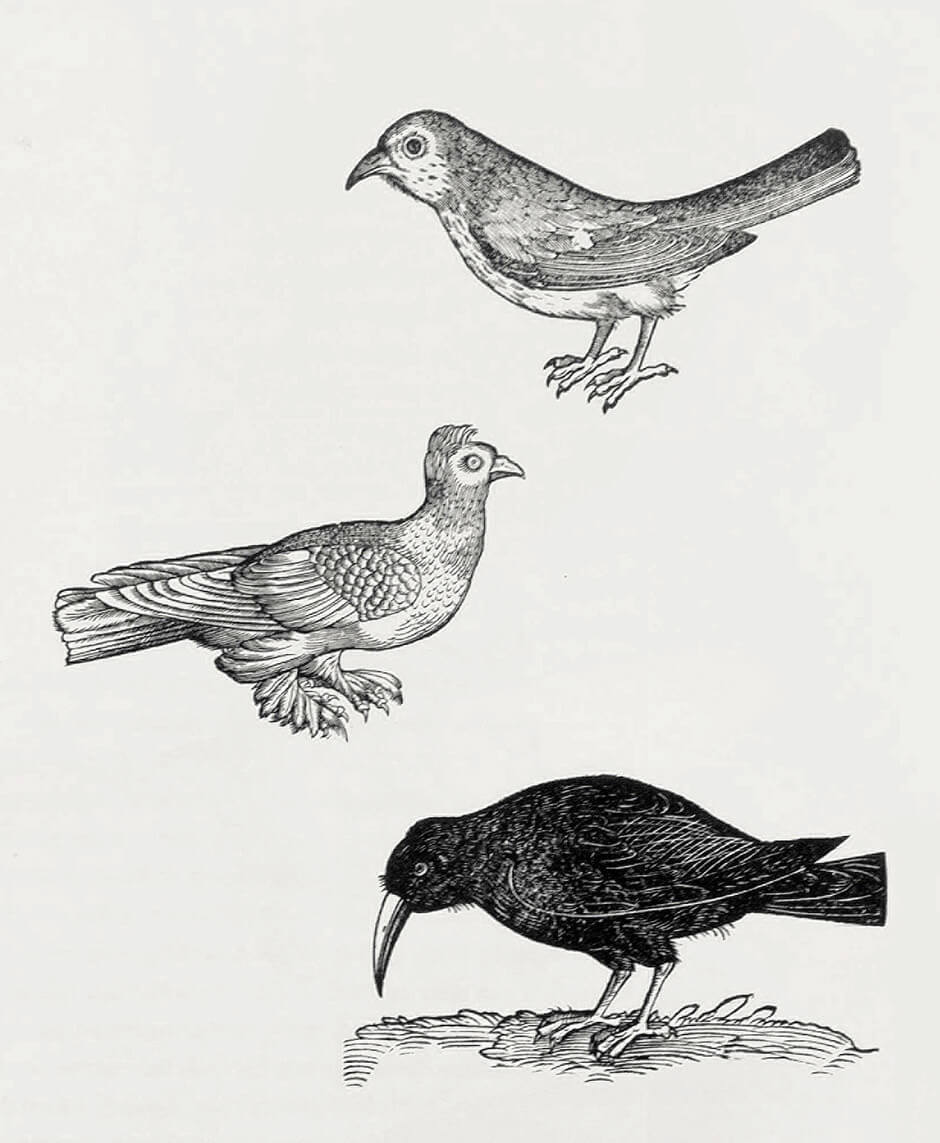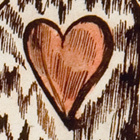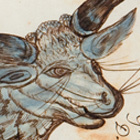Birds n.d.

Louis Nicolas, Birds, n.d.
Ink and watercolour on paper, 33.7 x 21.6 cm
Codex Canadensis, page 41
Gilcrease Museum, Tulsa, Oklahoma

One of the most beautiful pages in the Codex Canadensis is the opening page for the section on birds. Here, most of the birds are designated by their colours: “yellow bird” (number 1), “red finch” (2), “red and black finch” (3), and “royal blue bird” (4), though number 6 has a longer caption: “American sparrow, whose plumage is quite varied. In the winter it is white; in other seasons it is grey mixed with other colours.” It is one of the few pages on which the beautifully marked quill-and-ink drawings are enhanced with watercolour (or perhaps tempera). There is no way to prove whether Nicolas tinted the drawings himself or, as commonly happened, someone else did so at a later date.
As with the amphibians, Nicolas appears to have classified the birds in the Codex by habitat and size (smallest to largest). As with some of his drawings of people and animals, it is possible to link a few of his bird illustrations with engraved models from published sources. However, making the connection is tenuous, because, for example, in The History of Animals, Book Three, That Is of the Nature of Birds (Historiae Animalium Liber III qui est de Avium natura) (1555) by Conrad Gessner (1516–1565) there are 217 black and white engravings of birds illustrated and they are presented in alphabetical order, with names that are no longer familiar to us.
Despite the vague descriptions in the captions and his limited knowledge of taxonomy, Nicolas was sufficiently accurate to enable modern ornithologists to identify the birds from the drawings. The seven shown here have been identified by Michel Gosselin, who reproduced them in an article he wrote alongside modern photos of the same birds. In his words, the “Rouroucasou ou oiseau mouche” (top left) is the ruby-throated hummingbird; then, numbered one to six, the “oyseau jeaune,” the American yellow warbler; the “pinson rouge,” the purple finch; the “pinson rouge et noir,” the scarlet tanager; the “oyseau royal bleu,” the eastern bluebird; the “hortoland ameriquain,” the bobolink; and the “moigneau ameriquain,” the snow bunting.

 About the Author
About the Author
 More Online Art Books
More Online Art Books
 Acknowledgements
Acknowledgements